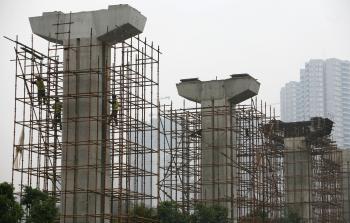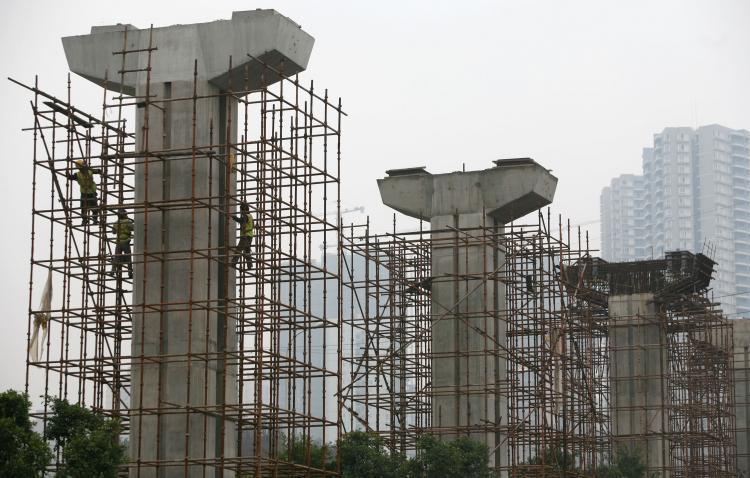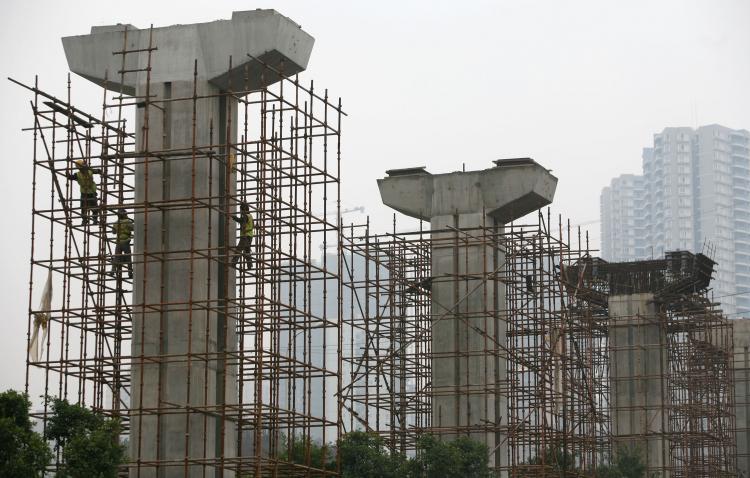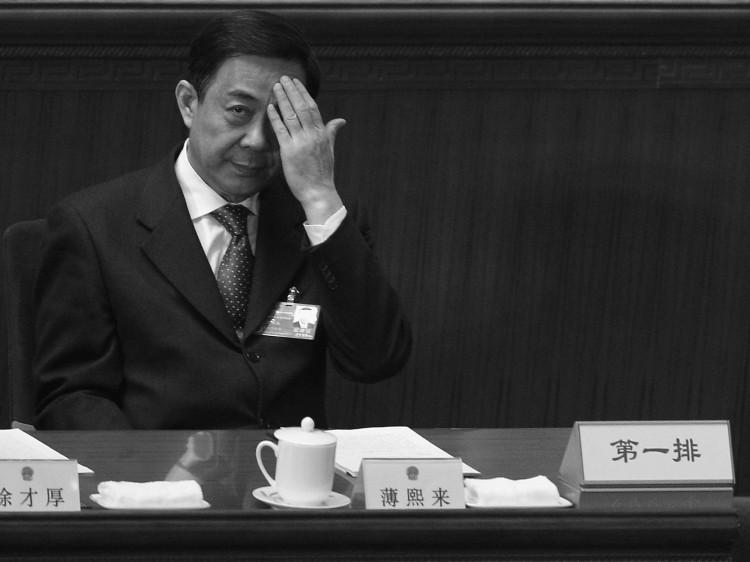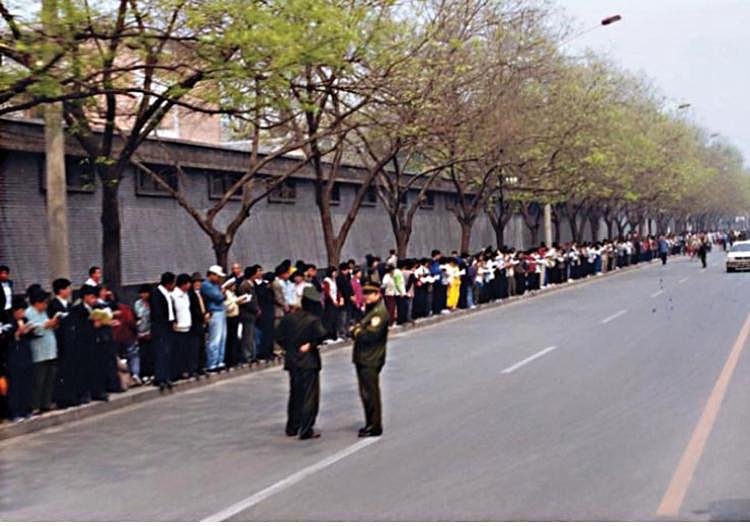The crisis on Wall Street will not destroy the U.S. economy. In Taiwan, the government has issued everyone a US$120 voucher to stimulate the economy. In China, however, its rescue plan does not benefit everyday people and many worry the plan will come to naught.
Some people believe Beijing’s US$586 billion economic stimulus plan is the same as the U.S. $700 billion bailout plan. An expert claims there are great differences between the two. To be more specific, although it is a economic plan, it is politically heavily tainted.
Beijing’s stimulus plan Is illegal say scholars
Process-wise, the U.S. bailout plan needed to be approved by the House and Senate and then signed by the president before it took effect. When the House’s bailout plan was first passed, it was voted down in the Senate. After numerous and lengthy negotiations, the bailout plan was passed after protections for tax payers was added, in particular, home owners’ rights were added to the proposal. In contrast, the stimulus plan in China was decided by a few people in power, overnight. Average Chinese just have to hold on during the sharp downturn.
A few scholars in China have questioned the plan, “China’s Constitution states financial decisions should be made by the National People’s Congress (NPC). The US$586-billion plan proposed by China’s State Department did not go through the NPC. The plan has no legal basis. China is probably the only country in the world that can throw together a colossal financial spending decision without any debate, without going through a legal process, and without listing the sources of funding. The livelihood of 1.4 billion people is decided in haste by a few people.”
Differences in planning and emphasis
The U.S. rescue plan was proposed by the Treasury Department and presented to the U.S. Congress and voted down by the House. The Treasury Department modified the proposal several times as it went back and forth for about two weeks before it was passed. The process of course wasn’t nearly as fast as in China.
Initially the U.S. bailout plan was for the Treasury Department to issue bonds, no more than US$700 billion to buy bad assets in the banking system. It was to stabilize the markets’ and investors’ confidence by saving Wall Street. On November 12, the U.S. Treasury Department announced the government funds would not be used to buy bad assets as previously planned, but would be put into the financial market to stabilize the credit markets. The priority was to increase the value of assets.
The focus of the U.S. rescue plan is on its developed virtual economy and financial system. The focus in China is on its real economy, based on building basic infrastructure. The US$700 billion comes from the Federal Reserve Board and the Treasury Department and is realized by tax cuts and capital injection. In other words, the U.S. government took money from the Treasury Department and bought stock in companies. The government can cash out the stock in the future whenever the time is right. In China, the 586 billion dollars comes from the central government, the local governments, and private investments. The rushed decision by the Chinese government to build railroads, houses, dams, and airports cannot be undone.
The final version of the U.S. bailout plan was $850 billion, 6.2 percent of the U.S. GDP. China’s US$586 billion accounts for 16.23 percent of its GDP. China’s number look like a lot on the surface but in reality there aren’t many new investments. There is another fundamental difference between the two plans—the U.S. government only buys listed stocks, while the Chinese government plan involves specific construction projects.
The U.S. bailout plan cut $150 billion in taxes, which accounts for 21 percent of its $700 billion rescue fund. China’s rescue plan also discusses a tax cut—to reduce the value added tax and increases the tax on exports. It is said that the tax revenues will be US$17 billion. This is merely 3 percent of the US$568-billion rescue budget. In other words, Chinese people receive far less benefit from the plan compared to the American people.
Communist mistakes and corruption
Many projects were initiated in a hurry, motivated by the market-saving plan. Many areas launched projects that were previously rejected, while others even launched projects in a similar fashion to the “Great Leap” forward movement(1). Among the 4 trillion yuan budget, 450 billion yuan were designated to build commercial airports in the next two years. China has a large number of luxurious airports. Many county-level cities still plan to build airports. However, during the financial crisis, who will be able to afford airline tickets?
Past experience shows, to obtain the superficial achievement of GDP growth, communist officials have blindly launched a number of major projects that led to a waste of massive resources and funds. According to the World Bank, between 1986 and 2000, China policy-related errors have cost the Chinese people about 400 to 500 billion yuan. The State Asset Supervision and Administration Commission (SASAC) also reports that one third of State-owned assets are either wasted or idle.
It is well known that in China corruption has been epidemic in construction projects. Major projects are accompanied by major corruption. Some critics indicate that the four trillion yuan budget would foremost stimulate corruption. It is expected that many will join the tide of corruption creating more inequities and buildings of inferior quality.
Inequality widens
In internet discussions, many Chinese reflect that the State Council’s policy is an act to temporarily put off the raging fire of unemployment. The market-saving plan does not focus on improving peoples livelihoods or effectively boost domestic demand for products.
Some argue that the current sluggish domestic demand is mainly the government’s fault. For instance, those supposed governmental responsibilities such as education, health care, pension, and so forth have been privatized and the responsibility has been passed on to the public and thus, everyone is worried about his own future. The highways supposedly paid for by the government have become toll roads which not only limit transportation efficiency, but also increase transportation cost. As a result, common goods are either in shortage or of poor quality. There is also an odd phenomenon: “Made in China” products are cheaper in U.S. markets than in China. For example, a pair of sneekers costs a few dollars at Walmart, but costs 300 to 400 yuan in China.
The income inequality gap in China is becoming more and more severe. Eighty per cent of the nation’s savings belongs to 20 per cent of the population. Low-income families have no money. The middle class has vanished quickly due to rising house prices. The payments for a studio unit would put a middle class family into poverty. The stock market crash wiped out 70 per cent of the middle class. As a consequence, the majority of Chinese have no money to spend.
Downhill slide?
Experts have said that the Wall Street crash will not kill the U.S. financial market. After this financial crisis, America will still be the final winner. However, China may not be so lucky. Many worry that if this market-saving plan fails, the Chinese economy will start going downhill. The Chinese economy is based on an abnormal pattern of relying on investment and exports. The Plan continues to rely on government investments and is surely limiting private investment. The large-scale export tax rebates also support exporting as the core business in China. Such an old trick is no new policy.
Alternately, to boost consumer spending, Taiwan announced on November 18 that everyone in Taiwan is entitled to receive a US$120 coupon. That government is spending 82 billion dollars with an estimated 0.64 percent GDP increase. In China, the new market-saving plan does not benefit the general public. The services industry has not been taken seriously and many worry that the plan will be for naught.
(1) Communist Party Chief Mao Zedong in 1957 initiated the “Great Leap Forward” campaign wherein he would out-produce Britain’s steel production in 15 years. The following year, he moved the time-table to one year. The campaign required agricultural peasants to quit farming and work in steel mining and production as well as public works. This left the country without food and in 1959, a famine. Estimations vary, but it is estimated that over 30 million Chinese died by 1961.
